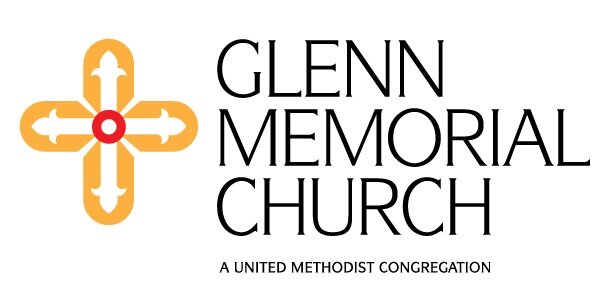If you thought the post on 1955 was a blast from the past, this one featuring 1956 will also remind you how much things have changed around Glenn.
As you read on, you'll also be reminded of how history tends to repeat itself. 60 years ago at Glenn, the young adults were trying to establish their own place and identity within the church, the youth were plentiful and active in the community, General Conference saw the passing of legislation regarding non-discrimination on the basis of race, and congregants faced the issue of political upheaval abroad and chose to adopt a refugee family from Holland.
A lot has changed. Yet a lot remains the same. As we dive into old issues of The Spire and notice the cyclical nature of time, we're faced with a question: "How will the church respond this time around?"
"Our Church School: The Builders Class"
January, 1956
The Builders Class was conceived during the latter part of World War II, largely through the efforts of Mrs. Emmett S. Johnson, then the Pastor’s Assistant. She and others recognized that many young adults in the University and neighboring community were not attending Glenn’s Church School because they could not find a suitable place in the existing School structure. Graduate students, young working people, and returning veterans formed the first ranks and soon made the class active in church and social functions. An early innovation was the Breakfast Club which gathered together before the school session. The building of a better world through greater spiritual understanding might well describe the theme of the Builders Class. The members chose their topics and generate stimulating and informative discussions under the leadership of a selected teacher. Such subjects include Protestant Beliefs, Communism, Romans, Religions of the World, and Missions.
"Glenn’s Young People Need Full Support"
January, 1956
If you were one of the privileged workers with youth, you could not help being thrilled with the interest, growth, and accomplishments of our young people. The parade of events that they carefully plan in their council meetings which meet once a month make possible growth within the individual lives of the members, but seek to extend the arms of Christ out into the community and throughout the world. The month of December was a stir with activities. Young people from all three divisions worked together to bring the Christmas story alive through their pageant; groups made visits to shut-ins and homes for the aged; 36 boys and girls from the Methodist Children’s Home enjoyed a Christmas Party given by the Intermediate Department; and when the six months’ givings for the Methodist Youth Fund was totaled, we found that we had given $201, leading the churches in the Atlanta East District.
"Mrs. Trimble Reports on Conference"
May, 1956
The General Conference of the Methodist Church held its recent quadrennial session in Minneapolis, Minnesota. There were 766 delegates, equally divided between ministers and laymen, representing one hundred and thirty-two conferences. The North Georgia Conference had twelve delegates. The proposed program was unanimously adopted. Much legislation of interest to all our people was enacted: the church declared the policy of non-discrimination on a basis of race and left implementation of that principle on a local option basis. Full clergy rights were granted to women. The liquor industry was strongly condemned as a spreading menace to the health and welfare of the nation. The missionary budget of the church was raised from thirty to forty-nine million dollars for the quadrennium.
"Glenn Acts to Sponsor Refugee Family From Holland"
May, 1956
The Refugee Relief Act of 1953 was enacted to provide through nationwide church participation a plan for the resettlement in the United States of worthy families driven from their homes in Europe and Asia by political upheaval. These Displaced Persons are neither symbols nor statistics – they are real human beings who have undergone tragedy and sacrifice. When a family is chosen, the church submits to MCOR (Methodist Committee for Overseas Relief) an assurance that employment will be available for the head of the family and that the family’s immediate needs for transportation from the point of entry to their new home, housing, and a small “nest egg” will be supplied. Thus a new life may be born for a family through the missionary effort of the church. Within a few months, Glenn was able to select Mr. and Mrs. Gustaef L. Thiess. Mr. Thiess, an architectural draftsman, was born in Indonesia. Mrs. Thiess has had experience teaching children. The couple, who have no children, were strongly recommended by the World Council of Churches.
Once again, our deepest gratitude to the late Bob Gerwig for his gifts of paper and time, ensuring that Glenn remembers and continues to tell its story.
The Communications Team

